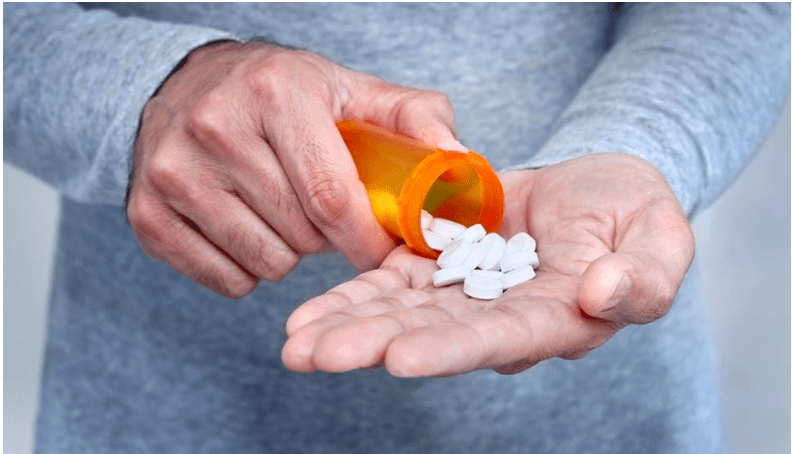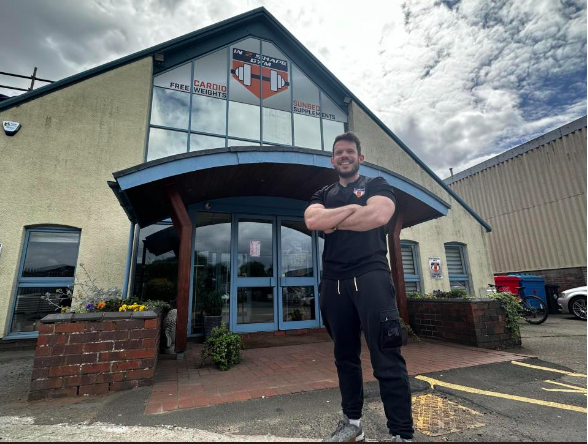Trending Stories
5 Drugs That Can Lower Cholesterol: A Comprehensive Guide to Protecting Your Heart

5 Drugs That Can Lower Cholesterol: A Comprehensive Guide to Protecting Your Heart
Lowering your LDL can cut your risk of heart attack and stroke
Cardiovascular Disease Risk Factors
A few important ones include:
- High cholesterol
- High blood pressure
- Smoking
- Diabetes
- Obesity
Cardiovascular disease remains the leading cause of death in the United States, claiming roughly the same number of lives each year as cancer, lower respiratory diseases, and accidents combined.
Older adults bear the brunt of this burden:
An estimated 80 percent of deaths from the disease occur in adults 65 and older. The good news, however, is that a lot can be done to prevent cardiovascular disease — a catchall term for several conditions related to the heart and blood vessels (think heart attack, stroke, and heart failure).
A healthy lifestyle can go a long way. So can controlling risk factors for the disease, a big one being high cholesterol.
What is cholesterol?
First, it’s important to know that cholesterol is not inherently bad. Our bodies produce it in the liver to help build cells and make hormones. You can also get cholesterol from your diet, especially from foods high in saturated fat, such as cheeses and fatty meats.
Too much of it, though, can lead to the buildup of plaque along the walls of the blood vessels, causing them to narrow and increasing the likelihood of a heart attack or stroke.
Getting plenty of exercise and eating a heart-healthy diet can help keep your cholesterol numbers in check. And if your cholesterol is high, medications can help to bring it down.
However, research shows that a significant share of people who could benefit from cholesterol-lowering drugs aren’t taking them, and the reasons for opting out range from misinformation to concerns about safety and cost.
Still, experts say, the science stands. Lynne T. Braun, a nurse practitioner affiliated with the Rush Heart Center for Women in Chicago, says decades of research have shown that when cholesterol is elevated — in particular LDL (low-density lipoprotein) cholesterol, sometimes called “bad cholesterol” — so is the risk of heart attack and stroke.
Conversely, when LDL cholesterol is reduced through lifestyle measures and medication, the incidence of heart attacks, strokes, and deaths decreases,” Braun notes. There is a strong relationship: Lower cholesterol equals fewer heart attacks and strokes.
Know your numbers
High cholesterol doesn’t come with symptoms, so the only way to know you have it is with a routine blood test. Most healthy adults should have their cholesterol checked every four to six years, according to the Centers for Disease Control and Prevention (CDC), though some may need it tested more frequently.
When you get your blood test report, you’ll see four numbers:
- Total cholesterol is the total amount of cholesterol in your blood.
- HDL (high-density lipoprotein) cholesterol — also known as “good cholesterol” — helps take the “bad cholesterol” out of your body, so higher numbers are better.
- Triglycerides are a form of fat in the blood that is used as an energy source to “fuel” your body. Too much, however, can cause health problems.
- LDL cholesterol — the “bad cholesterol” — is the culprit for clogging your arteries.
Prevention of cardiovascular disease focuses on LDL cholesterol and ways to lower it. If your LDL level is elevated, your healthcare provider will map out a treatment plan based on your risk of having cardiovascular disease.
For some patients with high cholesterol, it’s reasonable to have a two- to three-month trial to see if certain lifestyle modifications — diet, weight loss, and exercise, for example — lower LDL levels.
If your risk of cardiovascular disease is higher, however, your provider may want to start you on medication right away, along with lifestyle changes.
What medications are available?
Statins are the first-line treatment: While there are several options available, a class of drugs known as statins is considered the first-line treatment for high LDL. Statins, like many medications, can have side effects, but years of research have shown their benefits and safety.
“Numerous studies have found that lowering cholesterol with a statin reduces the chance of having a heart attack or stroke,” says Connie Newman, M.D., an endocrinologist and adjunct professor in the Department of Medicine at New York University Grossman School of Medicine.
- Effectiveness: Statins can lower cholesterol by 20 to 60 percent, depending on the particular statin and the dose.
- Examples: Atorvastatin (Lipitor), fluvastatin (Lescol), lovastatin (Altoprev or Mevacor), pitavastatin (Livalo or Zypitamag), pravastatin (Pravachol), rosuvastatin (Crestor or Ezallor Sprinkle) and simvastatin (Zocor or FloLipid)
- How they work: Statins slow down the body’s production of cholesterol.
- Possible side effects: Muscle soreness and achy joints can occur. There’s also a very low risk that some patients develop diabetes.
- What else to know: Statins have anti-inflammatory and antioxidant effects.
If statins don’t help you get to your cholesterol goal, your doctor may increase the dose or add a second medicine.
Other cholesterol-lowering drugs available:
Bile acid sequestrants?
Effectiveness: Can lower LDL cholesterol by 15 to 20 percent.
Examples: Cholestyramine colestipol powder (Colestid) and colesevelam pill (Welchol)
How they work: These drugs lower cholesterol by binding to it in the bile from the liver and preventing absorption.
Possible side effects: Constipation and an increase in triglycerides in some patients. These drugs may interfere with the absorption of other medications if taken at the same time.
What else to know: They can improve HbA1c (a measure of blood sugar levels) in patients with diabetes.
Cholesterol absorption inhibitors?
Effectiveness: Can lower LDL by 20 to 25 percent.
Examples: Ezetimibe (Zetia)
How they work: These medicines prevent the body from absorbing cholesterol from the intestine.
Possible side effects: Side effects are rare.
What else to know: These medicines are generally well tolerated.
PCSK9 inhibitors
Effectiveness: Can lower LDL by 45 to 60 percent.
Examples: Alirocumab (Praluent) and evolocumab (Repatha)
How they work: These medicines increase the removal of cholesterol from the body through the liver.
Possible side effects: Some people may have mild injection-site reactions.
What else to know: These medications are given by injection every two or four weeks and are mostly for patients at higher risk who did not tolerate other medications or did not reach their LDL goal. They are more expensive than other options and may require pre-authorization from your provider.
ACL inhibitors
How ACL inhibitors work: ACL inhibitors prevent the body from making cholesterol.
Possible side effects: These medicines are generally well tolerated.
What else to know: This medication, approved in 2020, can be costly and may require pre-authorization from your provider.
A few others to note: Two newer cholesterol-lowering medications available are inclisiran (Leqvio), which is injected under the skin and taken every six months, and evolocumab (Evkeeza), given monthly by IV infusion.
Both are very potent and can lower LDL levels by 50 percent. However, they are expensive and only indicated for those who are at very high risk and not at their LDL goal.
What About Niacin?
Niacin is an older cholesterol-lowering medication that is used less often, in part due to its side effects, like headache and a warm, flushing feeling.
Curious about the “no-flush” or “flush-free” niacin supplements stocked on drugstore shelves?
Not so fast. While these pills won’t give you a flush, they won’t lower your LDL levels. Plus, dietary supplements are not regulated like other medications, meaning their ingredients, formulations, and effects, some of which can be serious, vary widely.
Be sure to talk with your doctor about the best way to lower your cholesterol and about any supplements you are taking. Also in the arsenal are drugs to lower triglycerides, including fibric acids, or fibrates, along with omega-3 fatty acids.
Questions to ask your doctor
When you meet with your doctor to discuss your cholesterol-lowering strategy, be sure to ask:
- What are my cardiovascular risk factors?
- What is my goal for LDL cholesterol?
- What lifestyle changes can help?
- Will lifestyle changes alone bring me to my LDL goal?
- If I need medication for my cholesterol, what are the choices?
- (And be sure that all your drug allergies and past problems with medications are listed in your medical chart.)
- What do I need to know about the medication I will be taking?
- How often do I take it? Should I take it with food?
- What are the possible side effects?
- According to Eliot Brinton, M.D., an endocrinologist in Salt Lake City who’s affiliated with Intermountain Medical Center, “Older adults tend to be more sensitive than young adults to side effects of any medication, including those for cholesterol lowering.
- If you experience side effects, your doctor may adjust your dose or switch you to a different medication, Brinton notes.
- Is any monitoring needed?
- When should I have follow-up blood tests to see my LDL improvement?
- What should I do if I think I am having a side effect?
Finally, be sure to ask your provider for a copy of your lab tests to take home. Your doctor may also give you a chart to track your numbers in the future.
Source: AARP
Trending Stories
Sister Regina Liu: Empowering Health Through Acupuncture

Sister Regina Liu: Empowering Health Through Acupuncture
In the bustling world of healthcare, Sister Regina Liu stands out as a beacon of holistic healing. Her journey into the world of acupuncture is not only inspiring but also transformative for the countless individuals she has treated.
Through her dedication, Sister Regina has brought traditional Chinese medicine to the forefront, offering an alternative and complementary approach to modern medical practices.
The Journey of Sister Regina Liu
Sister Regina Liu’s path to becoming a renowned acupuncturist began with her deep-rooted interest in holistic health. Born into a family that valued traditional Chinese medicine, Sister Regina was exposed to the benefits of acupuncture from a young age. Her early fascination turned into a lifelong passion as she pursued formal education and training in the field.
Acupuncture: Bridging Ancient Wisdom and Modern Health
Acupuncture, a practice with origins in ancient China, involves inserting thin needles into specific points on the body to balance the flow of energy or “qi.” Sister Regina Liu has mastered this ancient art, using it to address a wide range of health issues.
From chronic pain to stress management, her expertise has provided relief to many who had exhausted conventional treatment options.
Impact on Community Health
Sister Regina’s impact extends beyond individual treatments. She has been instrumental in educating the community about the benefits of acupuncture, breaking down misconceptions, and making the practice more accessible.
Her workshops and seminars have enlightened many about the holistic approach to health, emphasizing the interconnectedness of body, mind, and spirit.
Success Stories and Testimonials
The success stories of Sister Regina’s patients are a testament to her skill and dedication. Many individuals who had lost hope found solace in her treatments.
For instance, Maria, a long-time sufferer of migraines, experienced significant relief after just a few sessions with Sister Regina. Her story is just one of many that highlight the transformative power of acupuncture under Sister Regina’s care.
Challenges and Triumphs
Like any journey, Sister Regina’s path was not without challenges. Integrating acupuncture into mainstream healthcare faced resistance initially.
However, her perseverance and the undeniable results of her treatments gradually won over skeptics. Today, Sister Regina is not only respected in the field of acupuncture but also in the broader medical community.
The Science Behind Acupuncture
While acupuncture is rooted in ancient practices, modern science has begun to unravel the mechanisms behind its effectiveness. Studies have shown that acupuncture can stimulate the release of endorphins, the body’s natural painkillers, and improve blood circulation.
These scientific validations have further cemented acupuncture’s place in contemporary healthcare, thanks in part to advocates like Sister Regina Liu.
Acupuncture in Modern Healthcare
Sister Regina’s work exemplifies how traditional practices can complement modern medicine. Hospitals and clinics increasingly incorporate acupuncture into their treatment plans, recognizing its benefits in pain management, mental health, and overall well-being. This integration signifies a broader acceptance and understanding of holistic health practices.
Future Vision
Looking ahead, Sister Regina Liu envisions a future where acupuncture and traditional Chinese medicine are fully integrated into the global healthcare system. She continues to advocate for research, education, and policy changes that support the inclusion of holistic practices in mainstream medicine.
How to Get Started with Acupuncture
For those new to acupuncture, Sister Regina offers practical advice on getting started. She recommends finding a certified acupuncturist, understanding the treatment process, and maintaining an open mind. Her guidance helps demystify acupuncture, making it more approachable for newcomers.
Conclusion
Sister Regina Liu’s journey in empowering health through acupuncture is a remarkable tale of dedication, resilience, and success. Her contributions have not only alleviated individual suffering but also enriched the broader understanding of holistic health. As acupuncture continues to gain recognition, Sister Regina’s legacy will undoubtedly inspire future generations of healers.
FAQs
1. What conditions can acupuncture treat?
Acupuncture can address various conditions, including chronic pain, migraines, stress, anxiety, digestive issues, and more. It is also used to support overall wellness and balance.
2. Is acupuncture safe?
Yes, when performed by a certified and experienced acupuncturist, acupuncture is safe. It involves using sterile, single-use needles and adhering to proper hygiene practices.
3. How many sessions are needed to see results?
The number of sessions varies depending on the condition and individual response. Some may experience relief after one session, while others may need multiple treatments.
4. Does acupuncture hurt?
Acupuncture needles are very thin, and most people feel minimal to no discomfort. Some may feel a slight tingling or warmth at the needle site.
5. How do I find a qualified acupuncturist?
Look for acupuncturists who are certified by recognized professional organizations and have positive patient reviews. Personal recommendations and consultations can also help in making an informed choice.
References
Trending Stories
In 2 Shape Gym Unveils Major Expansion in Stourport
Trending Stories
9 Reasons Why In-Person Friendships Are Irreplaceable
-

 Trending Stories1 year ago
Trending Stories1 year agoCDC: 1 in 4 Americans Still COVID-Free by End of 2022
-

 Health5 years ago
Health5 years agoMeghan Trainor Shares Motivational New Song ‘Blink’
-

 Health2 years ago
Health2 years agoHow Long Does Monkey Pox Last Before It Surfaces in the Body?
-

 Health2 years ago
Health2 years agoWhat Causes Swollen Body? Understanding Edema and its Triggers
-

 Health3 years ago
Health3 years agoNutrition and the Importance of a Fitness Program – 3 Things to Know
-

 Health3 years ago
Health3 years ago5 Weird Reasons Why Pimples Disappear After Marriage
-

 Health3 months ago
Health3 months agoHow Do Pawpaw Seeds Support Cardiovascular Health?
-

 Health2 years ago
Health2 years agoHealth Benefits Of Pawpaw Seed? 7 Things To Know







